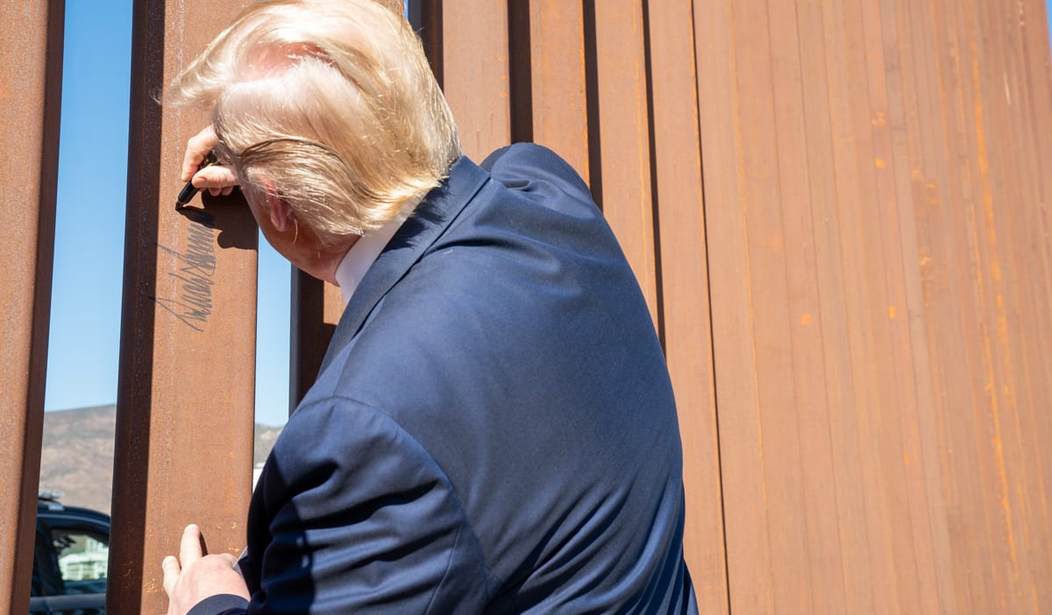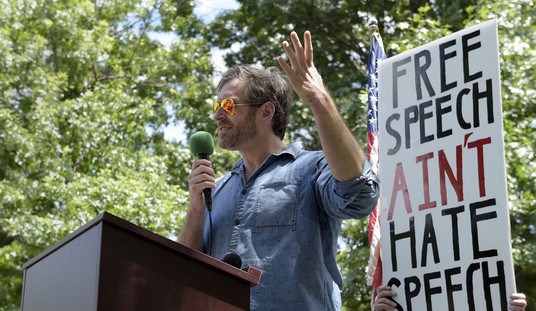Do border walls work? Based on the evidence at the new border wall in San Diego, they do. A year ago, the U.S.-Mexico border near San Diego was an easy spot for caravans to send migrants into the United States. Not so much anymore, according to a report from Fox News. A 14-mile long border wall in San Diego that replaced an old fence is already working wonders.
“It’s incredibly different…I’m able to see the old landing mat right next to the bollard and I’m able to see the old mesh right next to the new bollard and the difference is startling,” Douglas Harrison, Chief Patrol Agent of U.S. Border Patrol’s San Diego Sector, told Fox News.
Harrison explained that it’s not a barrier that can be easily scaled: “It’s an intimidating barrier. I’m an old Army guy, I was in the 101st Airborne and I would not try to cross that.”
The project to install 14 miles of replacement barriers began in May 2018 and is now complete. The secondary project began in February this year and it includes two miles of wall that did not exist before, officials say.
It’s part of a project that has, across the whole border, seen 71 miles completed, with an additional 162 currently under construction and an additional 276 miles in the “pre-construction” phase. It’s part of an ambitious plan to get somewhere close to 450-500 miles completed by the end of 2020.
While calculating the effectiveness of the barrier in terms of deterrence and preventing crossings is difficult, the erecting of the new wall coincided with a sharp decline in apprehensions.
That reflects a borderwide trend that has seen apprehensions along the border as a whole drop almost 65 percent since May, as part of a multi-faceted strategy from the administration that has included not only barrier construction, but also agreements such as the Migrant Protection Protocols (MPP) — by which tens of thousands of migrants have been returned to Mexico while they await their immigration hearings.
Harrison said that while the wall makes a significant difference, it is hard to state categorically how much of the decline can be attributed to the wall alone.
“Apprehensions are down in the area, some of that reduction is I believe attributable to the barrier, but…at the same time as erecting that wall, we’re using tools like MPP to reduce entries, we got the Mexican government stepping up their enforcement on their northern and southern borders reducing the number of people coming to the area,” he said. “So it’s a very difficult question.”
While multiple factors may contribute to the decline in apprehensions, the border wall does allow officers “to make apprehensions more safely and closer to the border — rather than within border communities.” The reduction in crime in the border communities has also resulted in a surge of development in the area.
“Even with the old wall system we had here in San Diego, we’ve got multimillion-dollar developments going up within sight of the border that could not have existed in the environment prior to starting to put that barrier out there,” Douglas Harrison said. “There was too much crime, too many people running through.”
WE ARE BUILDING THE WALL… pic.twitter.com/OQQaag2ZUW
— Donald J. Trump (@realDonaldTrump) September 8, 2019










Join the conversation as a VIP Member